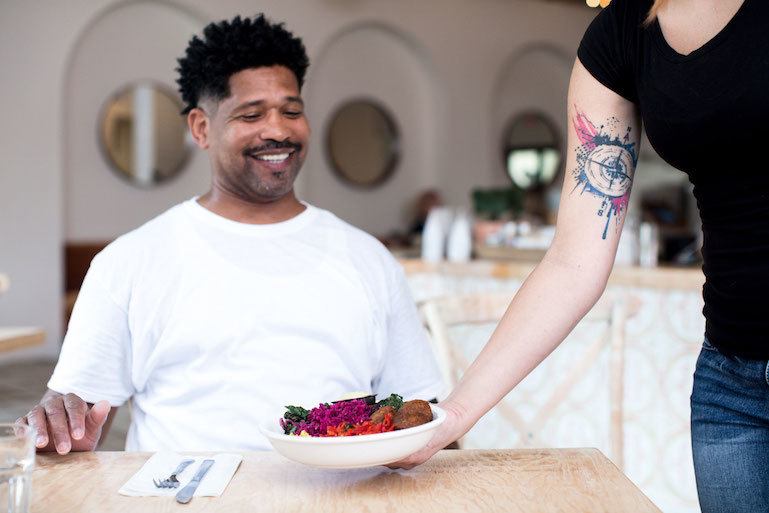
13 Simple Ways to Reduce Waiting Times in Restaurants
You’ve opened your dream restaurant, and business is booming. Customers are happy, and you’re prepared to take on any challenge—like figuring out how to reduce wait times in your restaurant—that comes your way.
In fact, it’s likely that this will be one of your biggest challenges as a restaurant owner. And solving it could deliver one of the biggest payoffs as well.
On major holidays, it isn’t uncommon to see an eatery with a line that wraps around the building. Other restaurants might face the threat of an extensive line during almost every lunch rush. In either case, owners of these establishments spend hours planning solutions to stay ahead of this problem. They know that if left unchecked, a long line leads to nothing but unhappy patrons and the likelihood of lost revenue.
With that in mind, let’s look at some steps you can take to reduce restaurant wait times for your establishment.
Pre-Schedule Your Staff
Make planning each phase of your workday easier with pre-scheduling. Preparing a pre-schedule will help you sort out table assignments and choose the right employees for each shift. Make decisions about where to position each staff member wisely by putting them to work in their best capacity. Creating clear assignments and scheduling the right employees is the first step towards reducing wait times effectively.
On the subject of scheduling, always make sure you have enough staff to cover each shift. Being understaffed can increase wait times, and it can also stress your employees out. During a workweek lunch rush hour, you’ll have customers who only have a one hour break before they have to return to their jobs. Keeping your business well staffed, and even overstaffed during exceptionally high volume periods, will help you get through the rush with ease while making a tremendous difference in your wait times.
Although overstaffing cuts down on wait times, there is one potentially adverse effect. It can derail a restaurant’s bottom line, reducing profits by increasing labor costs. Therefore, it’s smart to identify the number of staff you need for a shift that allows you to balance speedy service with profitability.
If you’re new to the restaurant business, this might take some time to figure out. And you can always err on the side of operating with fewer staff members if you’re comfortable jumping into the mix to help out either the front-of-house or back-of-house. Once you understand your labor needs, you can create a “set it and forget it” schedule that provides a balance in staffing that will not lead to a loss in profits.
Accept Reservations
It might seem obvious in retrospect, but not all restaurants accept reservations. This won’t help guests that show up without one, but it does give your customers a way to avoid a long wait if they plan in advance. To cut down on staffing costs, consider using an online reservation system. There are many tools that integrate with your restaurant’s website to facilitate restaurant creation, and solutions like OpenTable allow guests to create reservations right from their smartphone.
Train and Train Again
Training your restaurant staff ensures what every restaurant owner wants, an organized and fast-moving shift. Whether it’s lunchtime or dinner time, your crew will be able to handle high traffic pressure. Having a well-trained staff and food that arrives at the table in a reasonable amount of time will attract more customers to your business. Additionally, providing your team with extensive customer service training will ensure that they’re always capable of managing customers as quickly as possible.
Provide Distractions
Providing your customers with visual distractions will create the illusions of faster wait times. A television hanging above the tables or a jukebox that plays old rock and roll music in the background will help your customers forget how long they’ve been waiting. Be sure to include activities for families as well. Nothing makes a wait seem longer than it actually is quite like temperamental children.
SMS (Text Marketing) Tools
While customers are looking at pictures of old trains, former celebrity guests, or collectible memorabilia, let SMS alerts tell them when their table is ready. The best part is that you can also use SMS to track wait times, which will help you keep a better eye on the efficiency of your team.
SEE ALSO: How to Attract More Restaurant Customers on the Cheap
Pre-Prepare Snacks
Prepare a few snacks that you know customers will enjoy in advance. These little appetizers are an easy prep, and they’ll keep your customers busy in your waiting area while they queue up for their main seats. As they snack away over a salad or bread, they’ll soak up the ambiance of your restaurant while they forget all about the wait time.
That said, you still want the customer to enjoy their main meal, so make sure the snacks you’re providing aren’t too overfilling. After all, they’re only intended to provide your customers with a little distraction and something to do while they wait to be seated.

Put Someone on Drink Duty
When you have a lineup, the last thing you want to see is customers getting tired of waiting and leaving. Providing a refreshing beverage on a hot day makes your patrons feel appreciated, and might even entice them to hang around, regardless of how long they have to wait for a table or their meal.
Assign Someone to Appetizers
Serving small appetizers or samplers to your waiting patrons will make them feel even more special. Also, you’ll find that customers who visit but don’t want main menu items will enjoy the speed and efficiency that prepped appetizers allow.
While you’re at it, work on creating an easily cooked special of the day. Thinking ahead and preparing something ahead of time will massively reduce the waiting times your customers experience. If you’re worried about waste, survey customers to find out what types of daily specials they might enjoy the most.
Make Special Food Night Your Specialty
Some groups prefer to have special foods for special occasions. If your patrons are into professional football or college basketball, plan a dish that can be prepared readily for that night. Classic gameday dishes like chicken wings, nachos, and other easily-shared appetizers are likely to be fan favorites for these occasions.
Another riff on this idea is to develop a set of signature dishes. If they take off, their volume becomes more predictable. Yes, customers will order other things off your menu, but you’ll know that on any given night, you’ll sell a certain number of each signature dish. This simplifies prep and creates a level of predictability and stability that helps your staff operate more efficiently. This should translate optimizations that reduce customer waiting time.
Don’t Delay the Check Drop
How often have you noticed customers tapping their fingers as they wait for the server to bring their check? People are impatient and don’t have a lot of time to wait around for the bill.
Training a server in the artful delivery of a restaurant check solves the problem of long wait times for everyone, and usually increases the tip. A slow check delivery time also slows everything else down. Your current diners can’t leave until they get the bill, but you need them to clear out to make room for new customers who are still waiting for a table.
Oddly enough, the same thing happens in reverse when patrons overstay their welcome and linger at the table while other diners are waiting to be seated. A polite nudge usually signals the average customer that it’s time to leave.
Improve Table Busing Efficiency
Bussers and dishwashers might not be a part of the front end of the house, but these employees are highly skilled when it comes to improving wait times and creating a fast-paced flow for your establishment. Servers with a good rapport with the back of the house or kitchen staff have the shortest wait time for the tables in their sections.
On a busy day, dishes can pile up on tables, discouraging any customers that are still waiting for service. This lack of efficiency also makes the restaurant look unkempt and rather unpleasant to eat in.
SEE ALSO: Everything You Need to Know About Improving Restaurant Efficiency
Reduce Staff Apathy
When customers see staff sitting around or casually chatting, they become irritated while they’re waiting for service. Maybe the customer has to get back to work, or perhaps they’re trying to make it to a movie before the opening credits. Seeing unconcerned staffers sitting around idly, makes customers lose their confidence in your restaurant. Task the restaurant manager on duty with the task of encouraging staff to put a sweater over their uniform or change outfits entirely, before they sit down to chat. Even better, provide a comfortable staff lounge that they can use to rest their weary feet during their breaks.
Use a Point of Sale (POS) System
Trying to run a restaurant without a POS system is like flying a plane without radar. A dedicated restaurant POS system like ShopKeep gives you dozens of features that can help you run a more efficient restaurant, and reduce your wait times in the process. Here are some of the highlights:
- Easy Transactions – ShopKeep’s streamlined interface makes it a breeze for your waitstaff to enter orders, make updates to the check, and ring up customers.
- Simple Staff Management – Give your team an easy way to clock-in and understand who your top employees are so you can staff them during your busiest times.
- Powerful Inventory Management – Make sure you’re never out of an ingredient used in one of your signature dishes.
- Powerful Reporting – Detailed business reports can help you better understand your business operations so you can optimize efficiency and performance.
Even with all the preparation and contingency plans in the world, reducing restaurant wait times is a moving target. What works today, might not necessarily work tomorrow. This is particularly true if you see an unexpected influx of a large number of customers. However, with the right tools, technologies, and processes in place, you’ll be well positioned to tackle this challenge.
Want to try ShopKeep for yourself?
Just answer a few easy questions.
Need help finding the right point of sale?
Just complete the form. We’ll call you right back to explain how ShopKeep can work for you.
Hit the ground running.Sprinting, in fact!
Read our free, comprehensive guide, Small Business 101, to learn all you need to know about starting a thriving business.

